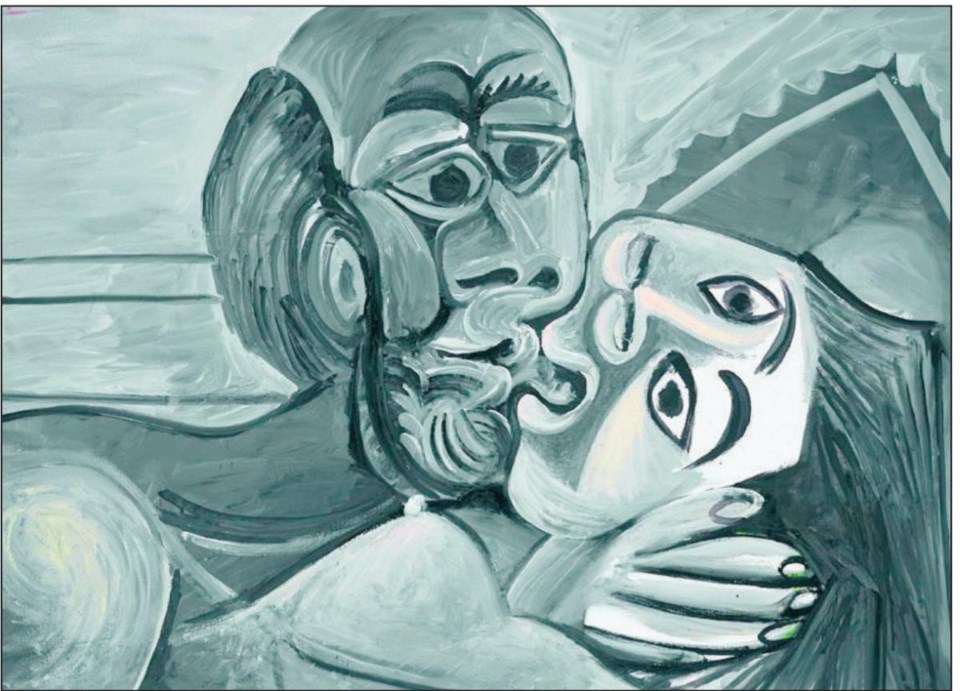Pablo Picasso may be best known for his Blue and Rose periods and cubism, but the Spanish artist also used black and white in his works, many of which will be shown in a new exhibition that opened Friday at New York's Guggenheim Museum.
Picasso Black and White, which runs through Jan. 23 and includes 118 paintings, sculptures and works on paper from 1904 to 1971, focuses on Picasso's exploration of the use of the two colours.
"This is the first exhibition that examines his continuous use of the black and white palette throughout his career, therefore we think it is a groundbreaking exhibition," said Richard Armstrong, the director of the Solomon R. Guggenheim Museum and Foundation.
"We think this offers new insights into his creative character," he added.
From La Repasseuse - a stark, sombre 1904 oil on canvas painting of an angular woman ironing - to The Kiss - a work that was completed decades later - the exhibition runs in chronological order up the curving ramps of the museum.
It includes works that have never been seen in public before and more than 30 will be on view in the United States for the first time.
Carmen Gimenez, the curator of the exhibition, said the minimal use of colour in Picasso's works in this exhibition showed his focus on line, form, drawings and tones, which is evident in The Kitchen, a 1948 painting of angles, circles, curves and varying shades of grey.
"His interest is on drawing and on the line," she said.
Even in his Blue and Rose periods, Gimenez said black, white and grey is a recurrent motif. The lack of colour, she added, enabled Picasso to manage complicated paintings such as his black and white masterpiece, The Milliner's Workshop, which is on loan for the exhibition from the Centre Pompidou in Paris.
The Charnel House, a jumble of corpses with a primitive quality, which was reportedly inspired by newspaper photographs of war, is another major work in the show, along with The Maids of Honor, the largest of his 44 variations of Diego Velazquez's Las Meninas, which Picasso painted in California.
"Black and white tended to be used in ambitious and complicated compositions," Gimenez explained.
She added that Picasso's monochromatic tones are rooted in Paleolithic cave drawings and were used to explore the works of other great Spanish artists such as Velazques, El Greco and Francisco de Goya, who also used black and grey.
"Grey was an essential part of the classical tradition," she said.
Head of a Horse, Sketch for Guernica is another work of art featured in the show. It is a study for arguably Picasso's most famous painting Guernica, his reaction to the massive air raid by the Germans in 1937 on the Basque town of Guernica.
After its run at the Guggenheim, the show will move to the Museum of Fine Arts in Houston.



